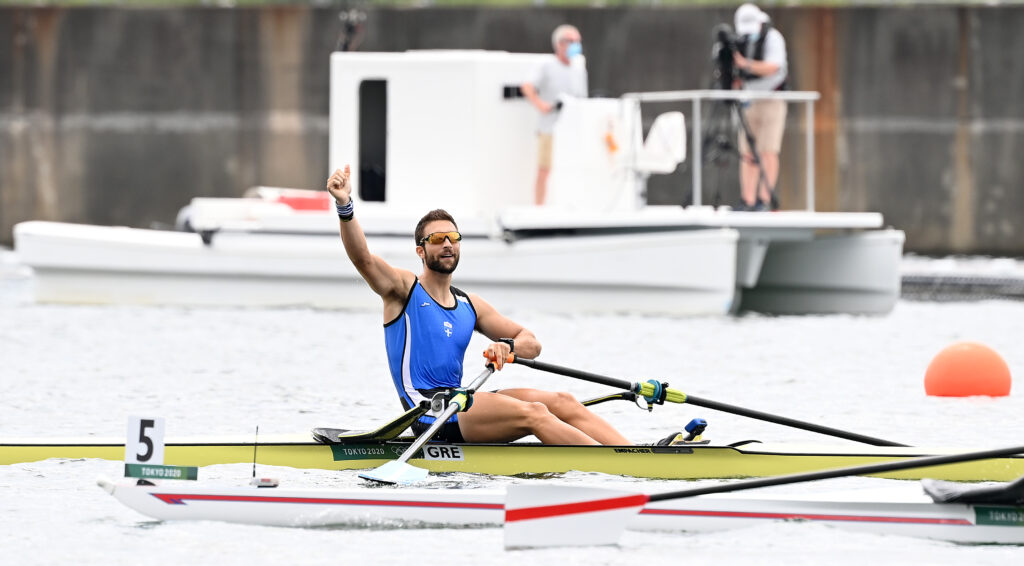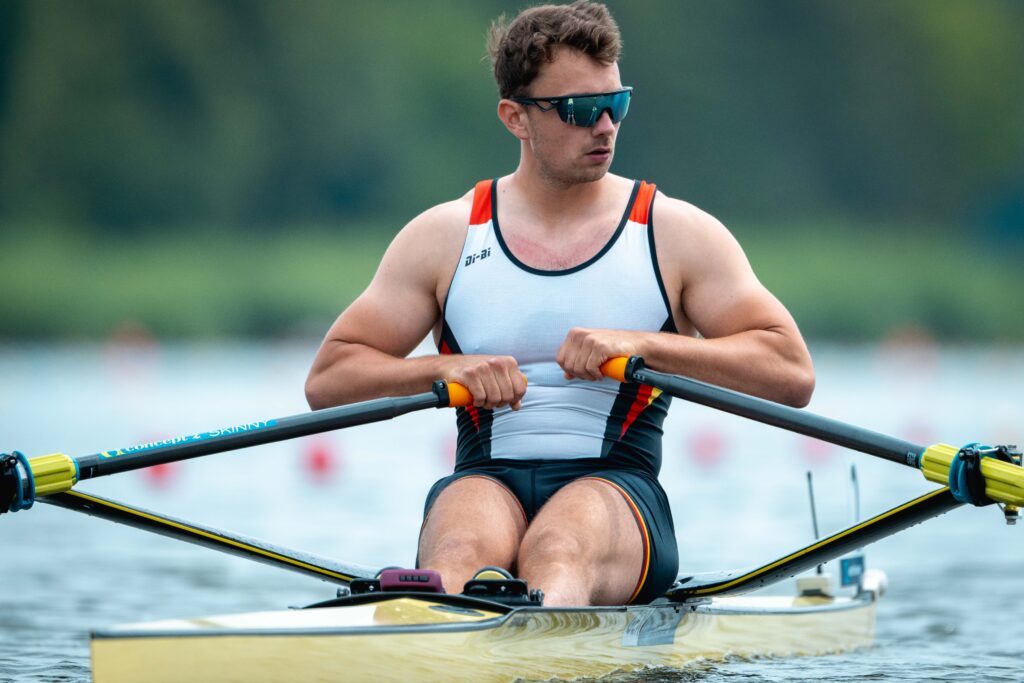
09 Jul 2024
The top 10 most-asked questions about Rowing at the Olympic Games
Rowing is a dynamic and demanding sport that captivates many with its blend of power, precision, and teamwork. Whether you’re a novice curious about the basics or an enthusiast seeking deeper insights, there’s a wealth of knowledge to explore. Here, we answer the top 10 most-asked questions in rowing, providing a comprehensive guide to this fascinating sport.
1. When was Rowing added to the Olympic Games?
Rowing was included in the first modern Olympic Games in 1896 in Athens, but the events were canceled due to bad weather. It officially debuted at the 1900 Paris Olympics and has been a staple of the Olympic programme ever since.
The 2000-meter race distance for rowing was standardized in the early 20th century and has been the official race distance for Olympic Rowing since the 1912 Stockholm Games. This distance is considered ideal as it balances endurance, power, and strategy, testing rowers’ physical and mental capabilities to their limits over a demanding yet manageable distance.
Women’s boat classes have been included since 1976. Women initially competed on 1000m, changing over to the 2000m distance ahead of the 1988 Games.
2.When is the Rowing competition taking place in Paris? And where? Why is it not on the Seine?
Rowing at the Paris 2024 Olympics will take place from July 27 to August 3 at the Vaires-sur-Marne Nautical Stadium, which hosted the 2023 World Rowing Under 19 Championships last year. This venue is selected over the Seine River to provide a controlled environment with the necessary facilities and conditions for fair competition, including standardised course lengths and minimal water traffic.
3. How Do Rowing Competitions Work?
Rowing competitions, or regattas, can vary in format but generally involve racing over a set distance, typically 2000 meters for standard regattas. Races are held in different boat classes and can include heats, semifinals, and finals to determine the winners.

4.What are the boat classes included at the Olympic Games?
World Rowing competitions feature a variety of boat classes. These are generally categorized by the number of rowers in the boat and whether the boats are sculling or sweep rowing boats. In sculling, each rower uses two oars, while in sweep rowing, each rower uses one oar. Here are the boat classes that are included in the Olympic Games Programme:
– Single Sculls (1x): One rower with two oars.
– Double Sculls (2x): Two rowers, each with two oars.
– Lightweight Double Sculls (L2x): Two rowers, each with two oars. Men must weigh below 72.5kg or part of a 70kg crew average. Women must weigh below 59kg or an average crew weight of 57kg.
– Quadruple Sculls (4x): Four rowers, each with two oars.
– Coxless Pair (2-): Two rowers, each with one oar.
– Coxless Four (4-): Four rowers, each with one oar.
– Eight (8+): Eight rowers, each with one oar, and a coxswain to steer and command.
5. Why do some rowers only have one oar and others have two?
In Rowing, the distinction between using one or two oars differentiates sweep rowing from sculling. In sweep rowing, each rower holds one oar with both hands, necessitating a more synchronized team effort to balance the boat. This technique is used in boat classes such as the pair, four, and eight. Conversely, in sculling, each rower uses two oars, one in each hand, which allows for more individual control over balance and propulsion. This method is utilized in the single, double, and quadruple sculls.
6.What nations are the best in Rowing?
Historically, several nations have excelled in Rowing, consistently performing well in international competitions and the Olympics. These include:
– Australia (AUS): Consistently competitive across multiple boat classes.
– Great Britain (GBR): Known for its strong rowing tradition and success across various boat classes.
– Germany (GER): Regularly produces top rowing crews, particularly in the men’s eight.
– New Zealand (NZL): Notable for its excellence in both sculling and sweep rowing.
– United States (USA): Traditionally strong in women’s rowing and the men’s eight.
At the Tokyo 2020 Olympic Games, New Zealand topped the medal table with three gold medals and five Olympic medals overall. In the history of Olympic Rowing, the United States of Americas sits atop the medal table with 33 gold medals.

7. What are the muscles most used in rowing?
Rowing is a full-body workout that engages multiple muscle groups. Rowers tend to be tall because a taller stature generally means longer limbs, which can provide a mechanical advantage in rowing by allowing for a longer stroke. This translates to covering more water per stroke and generating more power. The primary muscles used in rowing include:
– Legs: Quadriceps, hamstrings, and glutes drive the power phase of the stroke.
– Back: The latissimus dorsi, rhomboids, and trapezius muscles are crucial for the pulling motion.
– Core: The abdominals and obliques stabilize the body throughout the stroke.
– Arms: The biceps and forearms are engaged during the final part of the stroke.
8. I’m inspired after the Games – How can I get involved in rowing?
Getting involved in rowing is accessible through various avenues:
– Local Rowing Clubs: Many communities have rowing clubs that offer programmes for beginners, juniors, and adults. These clubs provide coaching, equipment, and often have competitive and recreational programmes.
– National Federations: Most countries have a national rowing federation that oversees the sport’s development and can direct you to local resources.
– School and University Programmes: Many educational institutions offer rowing programmes for students.
– Masters Rowing: For older athletes, masters rowing programmes provide opportunities to compete and stay active in the sport.
– Learn-to-Row Programmes: These introductory courses are designed for beginners to learn the basics of rowing in a supportive environment.
9. I’ve seen the indoor rowing machine at the Gym – is this the same thing that elite rowers are using to train?
Yes, the Indoor Rowing machine, often referred to as an ergometer or “erg,” is widely used by elite rowers for training. It simulates the rowing action and is an excellent tool for building endurance, strength, and technique. Many rowing clubs and teams incorporate ergometer sessions into their training regimens to complement on-water practices.
10. What are the common Rowing terms I should know?
Some essential rowing terms include:
– Catch: The part of the stroke where the oar blade enters the water.
– Crab: A mistake where the rower’s blade gets caught in the water, often slowing or stopping the boat.
– Drive: The powerful part of the stroke where the legs push against the foot stretchers.
– Finish: The end of the stroke where the oar blade exits the water.
– Port (or ‘strokeside’): The left side of the boat when facing the bow.
– Recovery: The phase where the rower returns to the catch position.
– Rigging: The arrangement and adjustment of the boat’s equipment, including oarlocks and footrests.
– Slide: The tracks on which the rower’s seat moves.
– Starboard (or ‘bowside’): The right side of the boat when facing the bow.
– Stroke: The complete motion of rowing, from catch to finish.

